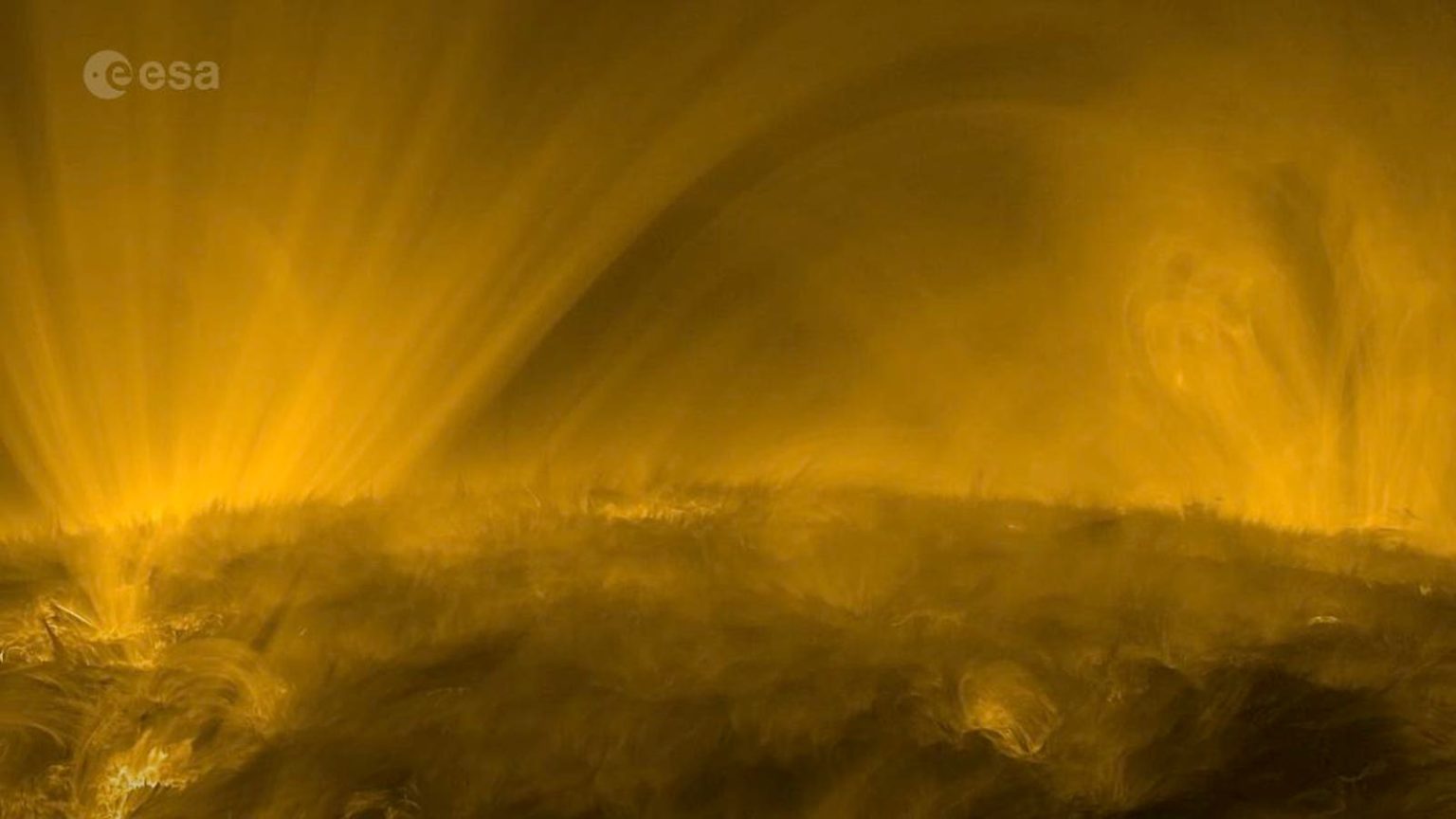The European Space Agency (ESA) has released a captivating video of the sun’s corona taken by their Solar Orbiter spacecraft. This close-up footage showcases the sun’s outer atmosphere, showing hair-like strands of plasma that have been dubbed as “fluffy” by ESA. The video highlights the dynamic and ever-changing landscape of the sun, with the brightest areas reaching temperatures of around 1.8 million degrees Fahrenheit. ESA also points out various solar features such as coronal moss, spicules, eruptions, and coronal rain in the video.
The footage was captured in late 2023 as the Solar Orbiter was approaching a close encounter with the sun. Launched in early 2020, the Solar Orbiter began its routine science operations in late 2021 with the aim of capturing the closest-ever images of the sun. The spacecraft’s mission is to study the sun’s polar regions, cycles, atmosphere, corona, and solar wind, which constantly emanates from the sun. This data will help scientists gain a better understanding of the sun’s processes and potentially mitigate the effects of solar wind on Earth.
The Solar Orbiter is not alone in its mission to study the sun, as NASA’s Parker Solar Probe is also exploring the solar wind. In 2021, the Parker Solar Probe even flew through the sun’s corona to gather data. Both spacecraft are collaborating to measure and track the solar wind as it travels through the solar system. Understanding these processes is crucial as solar wind can impact Earth by causing auroras, exposing astronauts to radiation, disrupting satellite electronics, and interfering with communication signals like GPS and radio waves.
Unlike the static view we get of the sun from Earth, the Solar Orbiter’s unique perspective provides detailed insights into the sun’s active corona region. By using specialized instruments like the Extreme Ultraviolet Imager, the spacecraft is able to capture stunning images and videos of the sun. These close-ups of the sun’s atmosphere reveal complex patterns, eruptions, and phenomena that help scientists unravel the mysteries of our nearest star.
The Solar Orbiter’s mission continues to unfold as it navigates closer to the sun and captures groundbreaking images. By venturing into uncharted territories and studying the sun’s enigmatic polar regions, the spacecraft is paving the way for further exploration and discovery. The data collected by the Solar Orbiter and other solar missions will not only enhance our understanding of the sun but also help us better prepare for and mitigate the impacts of solar activity on Earth’s technological infrastructure and space explorations. Through these pioneering missions, scientists are unraveling the secrets of the sun and unlocking new opportunities for space exploration and scientific research.













